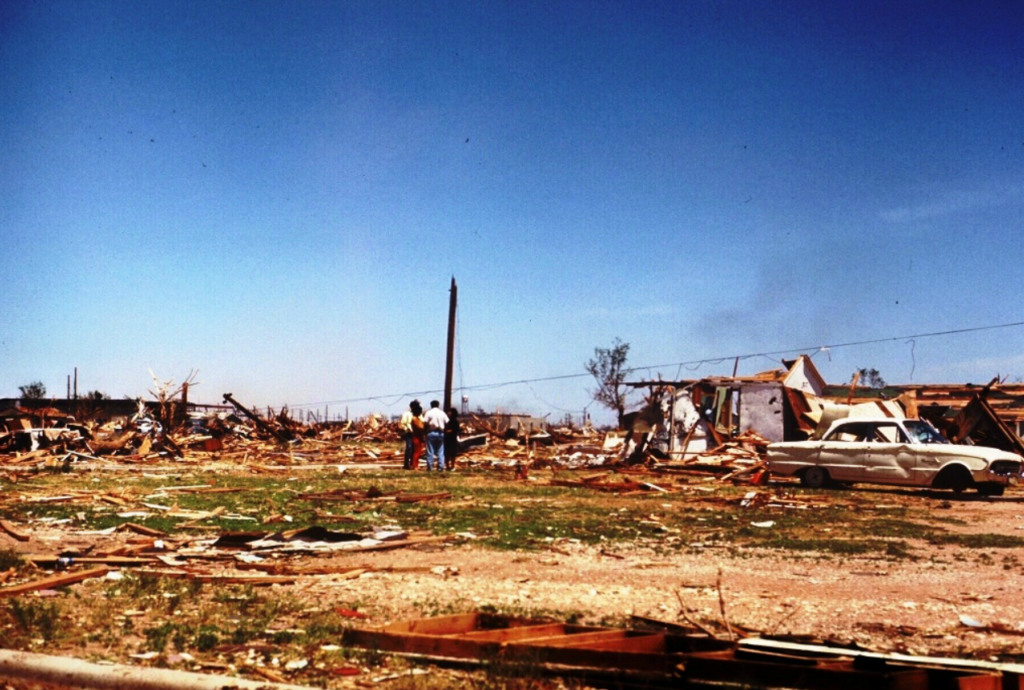G Systems developed a software solution for the tornado simulator, VorTECH, resulting in a highly synchronized and optimized system tailored to the needs of Texas Tech.
G Systems developed a software solution for the tornado simulator, VorTECH, resulting in a highly synchronized and optimized system tailored to the needs of Texas Tech.
In 1970, Lubbock, Texas, home to Texas Tech University, was devastated by a massive tornado. The tornado destroyed downtown Lubbock killing twenty-six people and injuring more than 1,500. As a leader in wind science and engineering research, Texas Tech realized the need for better data and understanding of tornadoes. They constructed a tornado simulator, VorTECH, which is the largest of its kind in the United States. Darryl James, professor in the Department of Mechanical Engineering and Wind Science & Engineering (WiSE) associate at TTU said, “VorTECH was designed to simulate tornadic winds in the mid-EF3 range or less. Approximately 92 percent of all tornadoes have maximum wind speeds of about 150 miles per hour or less.”
VorTECH hardware consists of eight large fans and 64 vanes arranged in a circle on the perimeter of the simulator to rotate 160,000 cubic feet of air per minute. The system has provisions to read up to 512 pressure sensors with a data acquisition rate of up to 625 Hz per sensor. The researchers mount a replica of a structure, like a building or home, to a moving platform that travels through the simulator as data is collected from the pressure sensors. In addition to the structure itself, Texas Tech needed software to control, read, and log the position of the platform as well as reading and logging the pressure sensor data.
Three separate embedded data acquisition/control devices for the pressure readings, position reading, and motor control were utilized. Due to the anticipated load on the computer’s processor, a dedicated computer was used to read up to 512 channels at 625 Hz on each channel in real time through an Ethernet connection from the embedded pressure data acquisition device. A second computer was used by the operator to control and read the position of the platform. The embedded device for both the pressure readings and position readings used its own internal clock to timestamp the data collected. For the calculations to be accurate, the timestamps from the pressure readings and the position reading required alignment and synchronization. A separate PTP grandmaster was used to synchronize the two time sources. The key was to synchronize all devices, applications, and data collected to provide researchers the insight needed to understand the force of wind and make recommendations on how to build safer homes and buildings.

G Systems was hired by Texas Tech, based on our past success with other projects, to architect and build the software needed to properly analyze the data being captured by VorTECH. G Systems worked closely with the Texas Tech team to provide the desired software design and integration with their existing hardware. The software synchronizes the two embedded devices to the PTP Grandmaster. Along with the two Windows applications and two embedded applications, G Systems wrote custom FPGA code to interface with a third-party device, which acquired the position readings from the SSI encoder.
The Windows position panel application along with the two third-party embedded devices allow the team to vary the speed and direction of the platform. It includes adjustable limit switches for stopping the motion at either end of the track to avoid damage to the equipment. G Systems designed a custom algorithm to calculate the velocity based on and at the same rate as the position readings. A check box allows the operator to move the platform to a stationary test position without logging data.
The Windows pressure panel application, along with the third-party embedded device, allows the operator to select which pressure sensors to read, calibrate the pressure readings, and define the location of the data file for storing the pressure readings. Graphs on the user interface show the current reading for each pressure channel as well as a running history of selected channels.
“We have never worked with somebody who works as hard and is as accommodating as Russell.”
– DELONG ZUO, PhD, Associate Professor, Texas Tech University

G Systems successfully met the customer’s needs by designing and developing two Windows applications and two embedded applications. The G Systems team leveraged extensive experience with software best practices, knowledge in root cause analysis, and the ability to collaborate with key vendors.
Texas Tech was extremely pleased with the work G Systems performed. Delong Zuo, PhD, Associate Professor, Department of Civil, Environmental and Construction Engineering and Technical Director of Wind Engineering at the National Wind Institute, Texas Tech University, said, “The simulator is in such demand that we have been running our experiments 7 days a week, 13 hours a day.” He also commented about G Systems’ project manager and lead engineer on the project saying, “We have never worked with somebody who works as hard and is as accommodating as Russell.” Zhuo Tang, Ph.D, Research Scientist, National Wind Institute, Texas Tech University added that “The software written by Russell Blake from G Systems was delivered today and works great.”
During the development phase, G Systems evaluated the current computer’s processor usage and determined the reading and logging of the pressure readings could be done on an embedded device instead of the Windows computer. Consolidating the hardware and allowing the operator to start the pressure embedded hardware readings and position reading at the same time would allow for better correlation of the data from the pressure and position readings. Texas Tech was pleased with the recommendation and efficiency that would be gained.
G Systems is excited to continue working with Texas Tech to further improve the control and data acquisition software. The research they are conducting through VorTECH is critical to saving lives and minimizing the damaging effects from future tornadoes.
The best way to begin is by having a conversation with a member of the G Systems teams about your test challenges and the options for helping you solve them.
Based near Dallas, Texas, G Systems is an internationally recognized systems integrator specializing in the modernization of complex systems of all sizes. We are experienced in the design, integration, assembly, production, and maintenance of custom turnkey solutions that support our customers at all phases of their product’s maturity cycle.
NAICS Codes: 541330, 541715, 541511, 334515, 335999, 334519
CAGE Code: 3HPP5
![]()